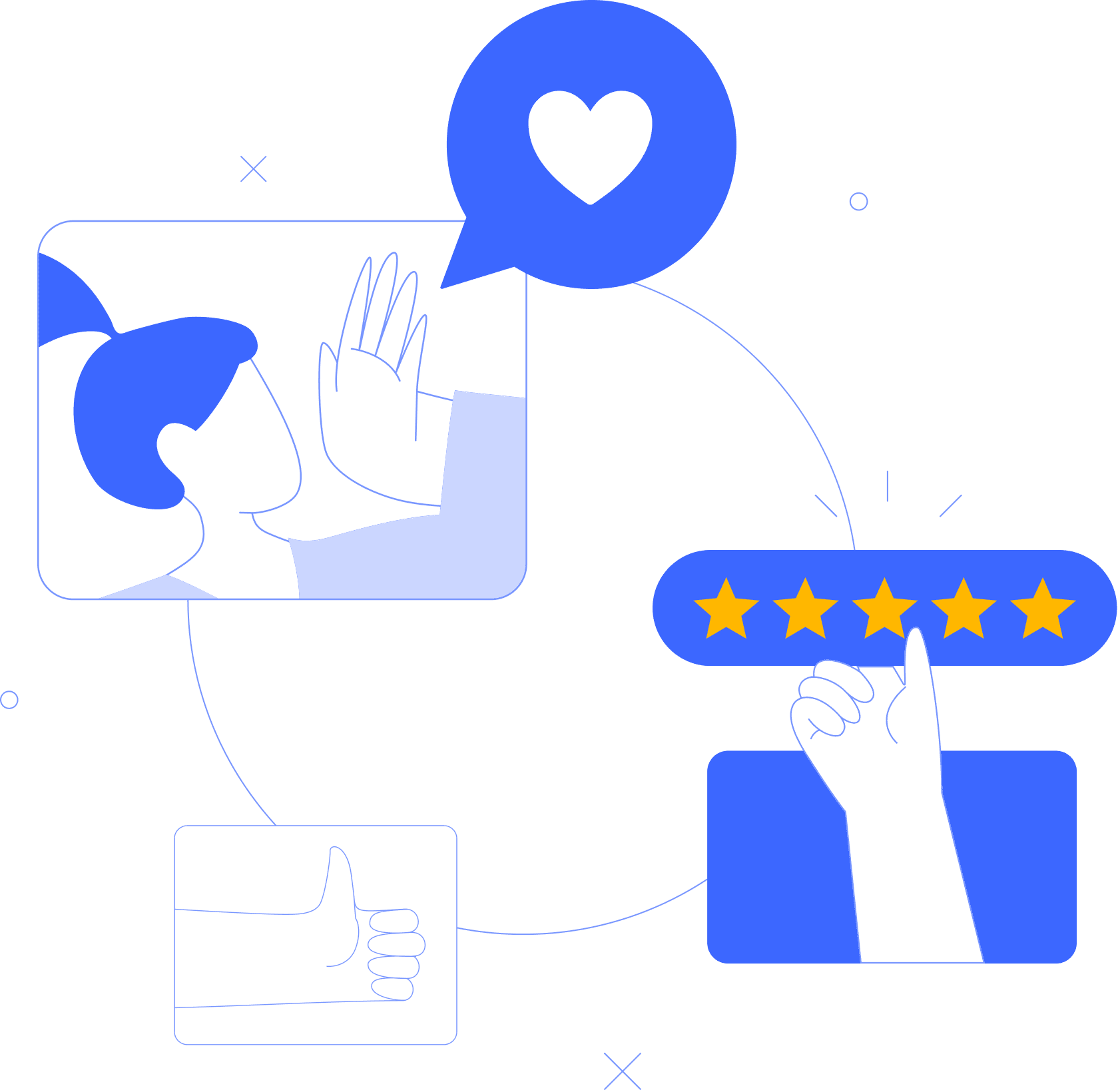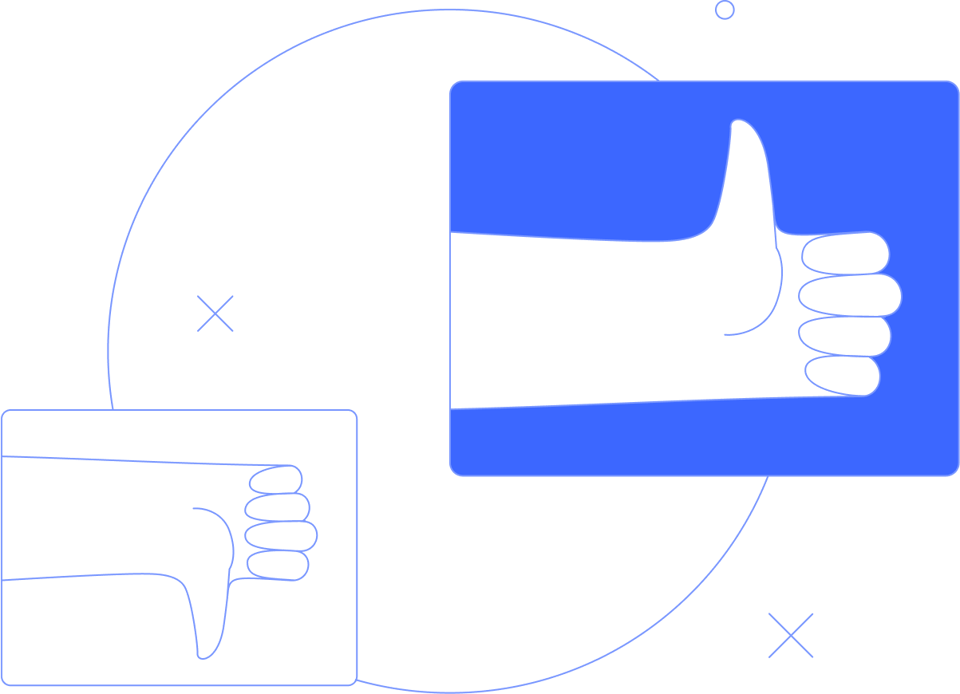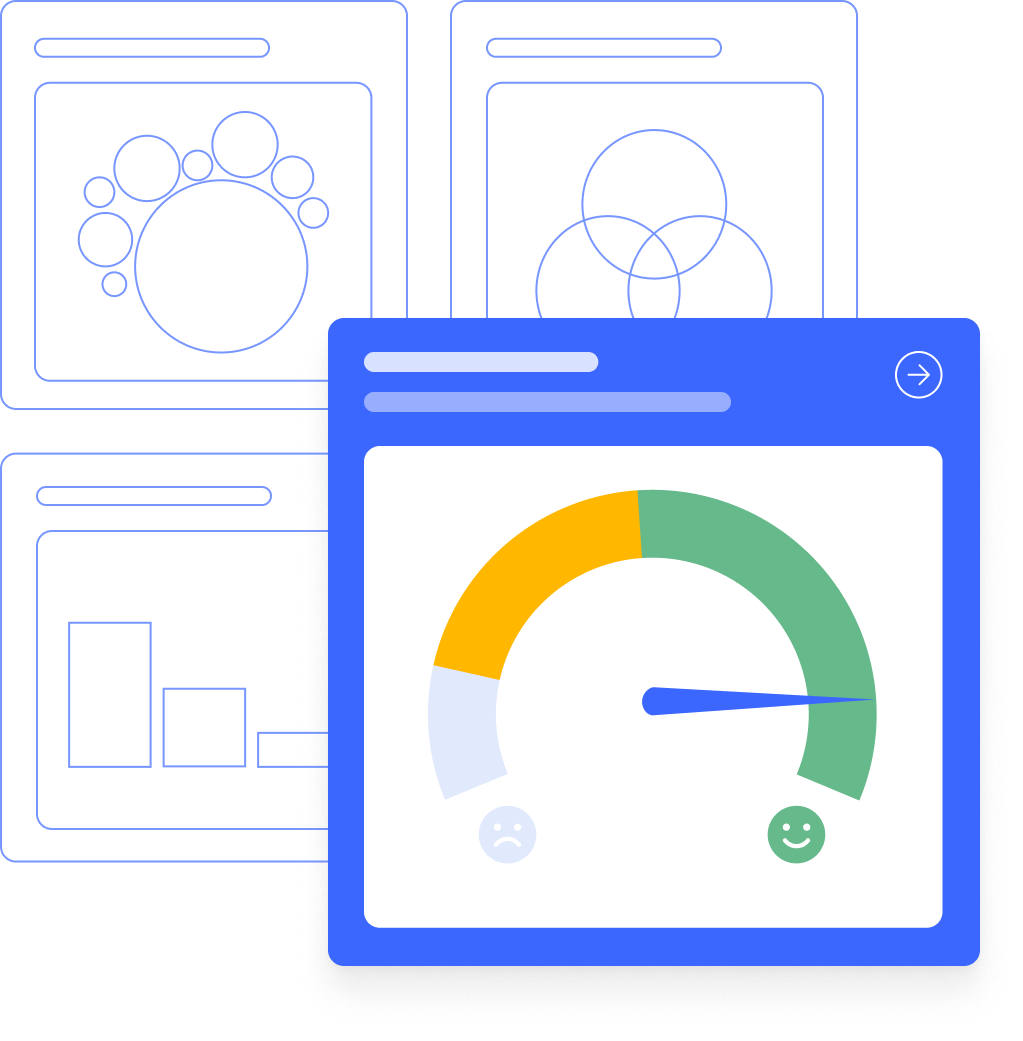Use Case
Customer Satisfaction
Discover the heartbeat of your business by delving into Customer Satisfaction Analysis. Harness feedback, data and insights to grasp your customers' thoughts and desires, and create experiences they'll love.

Advantages of Customer Satisfaction Analysis
-
Satisfied customers return for future purchases and pay even a higher price, leading to increased revenue and customer loyalty.
-
Get valuable feedback to improve your product or service, align with the needs and wants of your target audience, and consolidate your customer base.
-
Gain a competitive edge, differentiate your business by offering superior customer experiences.
Customer Satisfaction Analysis
Customer feedback is your competitive edge

Net Promoter Score
Your roadmap to customer success with NPS

KPIs to measure
-
NPS
-
CES (Customer Effort Score)
-
CLI (Customer Loyalty Index)
-
CSAT (Customer Satisfaction score)
Essential Customer Satisfaction questions
-
For crafting the perfect customer experience
How would you rate your recent experience with our customer support team? Can you share any memorable positive or negative experiences you've had with us recently?
-
For increasing customer loyalty
Would my customers recommend my product/service to a friend or colleague? What factors make my customers come back for more?
-
For benchmarking competitors
How does my product/service compare to similar offerings from my competitors? Have my customers tried my competitors' products/services, and if so, how do they stack up against mine?
Pricing analysis explained (TO BE REMOVED)
-
A price analysis determines the willingness to pay and price sensitivity of the target group, helping in setting an optimal or ideal price for a product or service.
-
When conducting a price analysis, there are three established methods that can help researchers achieve valid results based on their research goals: Gabor-Granger (to determine price-sales function), Van Westendorp (to determine optimal price range, willingness to pay), and Conjoint analysis (to simulate real-life trade-off decisions).
-
Cost analysis focuses on the cost incurred in producing a product or service, while price analysis focuses on the willingness to pay and price sensitivity of the target group for a product or service.
-
While there are many approaches to pricing strategy, a few leading methodologies include Van Westendorp and Gabor-Granger pricing methods.
-
The primary goal of a price analysis is to determine the optimal price point for a product. Depending on the method, it can also determine the price range or a price-demand function (Gabor-Granger). A conjoint analysis is also suitable and provides highly realistic results.
More use cases & methods
Tracking
Consumer tracking
Strategy
Target group analysis
Tracking